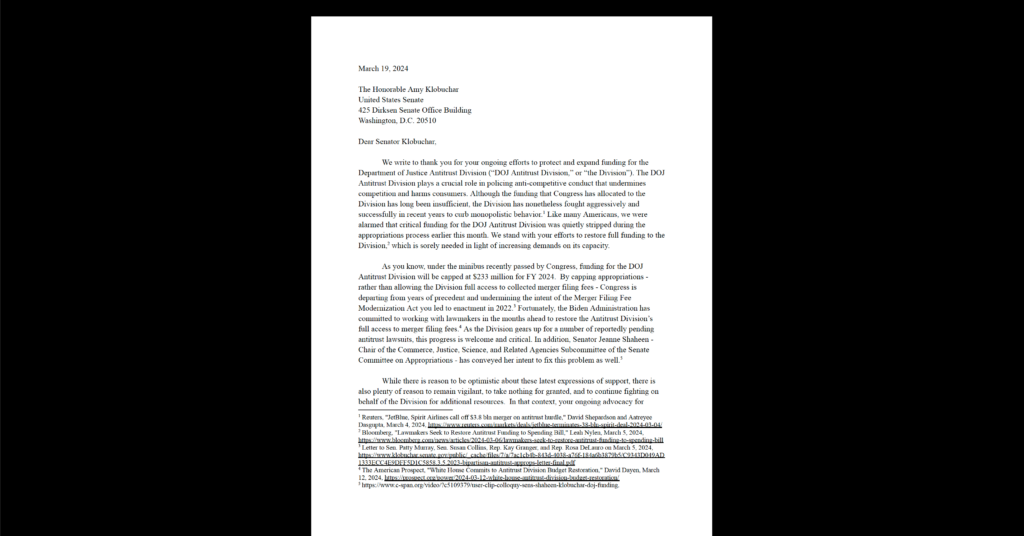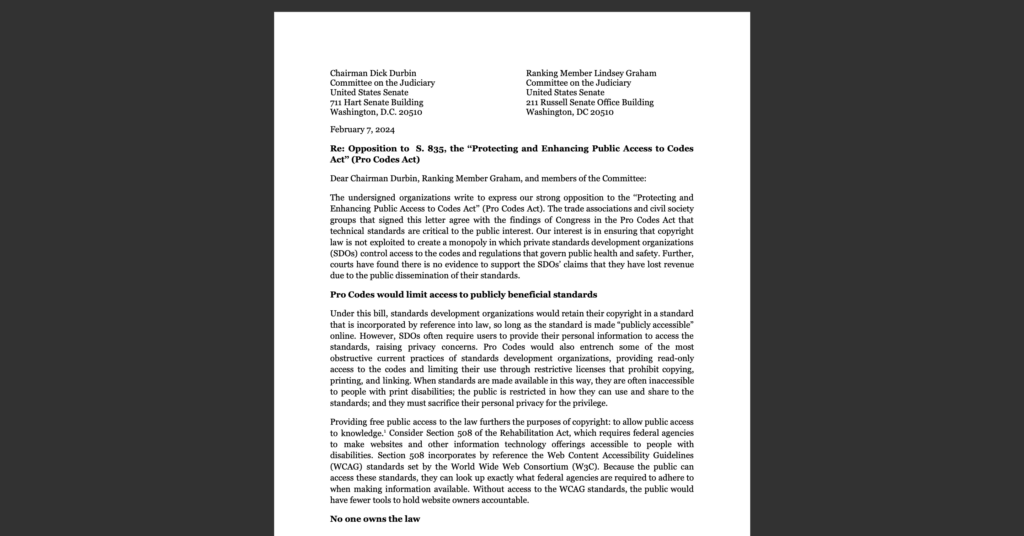Scoring the Aereo Decision
Yesterday’s Aereo decision was a clear win for broadcasters and a clear loss for Aereo and its subscribers. But what about the case’s potential impact on cloud computing technologies – the focus of the brief CDT filed with several industry allies?
On balance, I’d say the news on this front is actually reasonably good. Many observers had been struggling to articulate how, if the Court ruled against Aereo, it might clearly distinguish Aereo’s system from other products and services currently presumed to be lawful, like remote digital video recorders (DVRs) or cloud-based storage lockers. If the Court were to rule against Aereo, how would it thread this supposed needle?
As it turns out, the Court tried to limit the scope of its decision by focusing principally on the similarity between Aereo and cable TV service. The downside of this approach is that it doesn’t offer a very useful or satisfying legal distinction; there’s not much helpful guidance here for any future cases involving technologies that are not closely akin to cable television. But on the plus side, the approach probably succeeds in making the holding quite narrow. It will be relatively easy, in any future litigation, for technology providers to say that the Aereo precedent doesn’t apply to services that don’t mimic cable television. Moreover, the Aereo opinion lists at least three other factors (page 16) that could distinguish other technologies from that of Aereo. In short, the case gives anyone trying to distinguish themselves from Aereo a lot of potential pegs to try to hang their hat on. That’s not exactly legal certainty, but nor is it a broad threat of liability.
Digging a little deeper, let’s take an initial look at where the Aereo decision seems to leave the five key principles that our brief urged the Court to preserve – recognizing that the full implications of the case will depend on how it is interpreted by lower courts. The principles we urged are in bold.
- Volitional conduct is a necessary element of direct liability. We argued that a crucial first step in cases involving technology and copyright is to analyze which party (the technology, or its users) engages in volitional conduct that proximately causes the copying or performing in question. On one hand, the majority opinion does not expressly endorse the volitional conduct test or indeed use that term at all (unlike the dissent, for which the volitional conduct requirement is a primary focus). On the other hand, the opinion does begin by assessing whether Aereo itself “performs” copyright works or merely enables its users to do so. Thus, the Court effectively agrees that direct liability cases need to consider which party is the direct actor. The Court decides that Aereo’s similarity to cable effectively answers that question for this case – we know the law treats cable systems as performing, so it must treat Aereo that way too. The opinion offers little guidance for future cases in which that kind of shortcut doesn’t apply, but it certainly doesn’t reject the volitional conduct framework previously adopted by lower courts.
- When a user directs a computer to store a personal copy of a work, a subsequent transmission of that copy back to the same user is a private performance, not a public one. For cloud computing, it’s essential that computers be able to transmit to users their own, lawfully acquired personal copies without such transmissions being treated as public performance. The Aereo opinion holds that transmissions can be public performance even when there are separate copies and separate transmissions for each subscriber. But, the Court also said that “an entity that transmits a performance to individuals in their capacities as owners or possessors does not perform ‘to the public.’” That’s a pretty strong indication that it’s not public performance to enable users to stream back their own, previously acquired content.
- In assessing whether a performance is public or private, the physical location of the computers (or other devices) is irrelevant. Having copyright liability turn on the location of equipment would be damaging to cloud computing – after all, the entire point of cloud computing is to enable users to access computing resources without regard to location. The Aereo opinion contains one unhelpful sentence in this regard, noting that Aereo’s equipment is housed outside its users’ homes. But it would be hard to characterize the decision as placing any real legal weight on this observation; it’s pretty clear that the dispositive factor was Aereo’s “overwhelming likeness to cable.”
- The fact that multiple users may store or transmit the same work does not transform otherwise individual private performance into a single, public one. Our brief warned against an “aggregation theory” under which multiple transmissions of the same work would automatically, as an across-the-board rule, be treated as part of the same performance. On this point, the Court’s opinion is somewhat ambiguous. It certainly says that multiple transmissions can sometimes be treated as a single performance, and finds Aereo to be such a case. But the breadth of its aggregation rule is not immediately apparent.
- A performance can be private without a licensing relationship. We said that a licensing relationship between a technology provider and rightsholders (in this case, Aereo and broadcasters) cannot be a prerequisite for treating performances as private. This was in response to the suggestion that the existence of a licensing relationship might be the key distinction between Cablevision’s remote DVR and Aereo. Consistent with our recommendation, the Supreme Court didn’t focus on this kind of licensing. (The Court’s opinion suggests that licensing relationships between users and copyright holders could well be relevant to the analysis, but that’s an entirely separate question from whether the technology system itself has a licensing relationship with copyright owners.)
The bottom line is, I don’t think the Aereo opinion contradicts the principles CDT had urged the Court to preserve. The case is perhaps a missed opportunity to provide greater confirmation and clarity, and there is some ambiguous language that could potentially be fodder for mischief in future litigation. But on the whole, the Court avoids directly stepping on any of the major landmines we saw lurking for cloud computing. I’m cautiously optimistic that the decision won’t prove harmful to the general legal environment for cloud computing.


